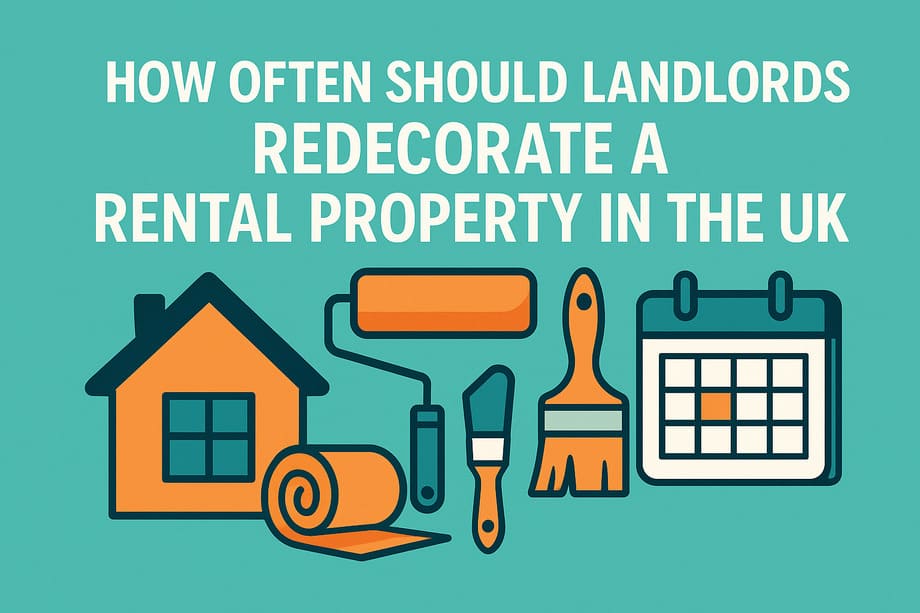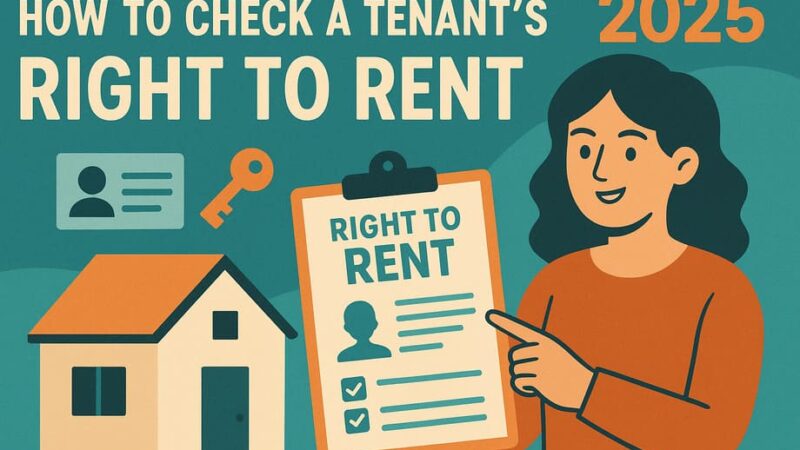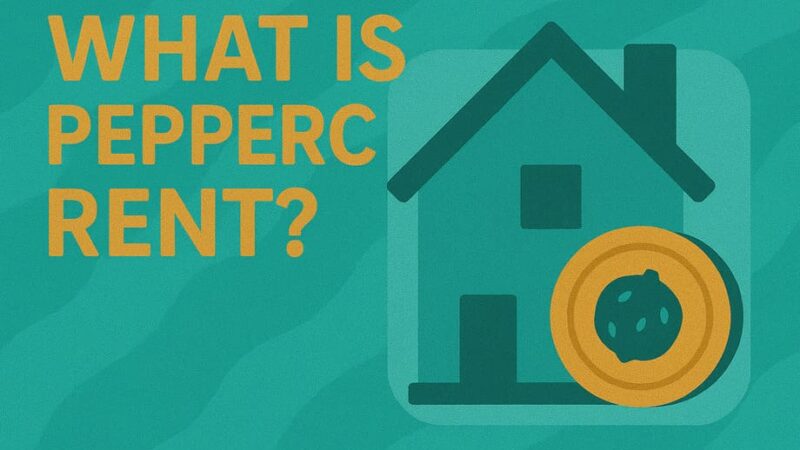How Often Should Landlords Redecorate a Rental Property in the UK?

Maintaining your rental property’s appearance isn’t just about aesthetics – it’s a crucial factor in attracting quality tenants, maximizing rental income, and ensuring long-term investment success. One of the most common questions UK landlords ask is: how often should I redecorate my rental property?
The answer isn’t straightforward, as redecoration frequency depends on various factors including tenant turnover, property usage, and the condition of existing décor. However, understanding the legal landscape, industry best practices, and cost-effective strategies can help you make informed decisions that protect your investment while keeping tenants happy.
With the rental market becoming increasingly competitive and new legislation like the Renters’ Rights Bill changing the landscape in 2025, maintaining your property to high standards has never been more important. Let’s explore everything you need to know about redecoration schedules, legal requirements, and practical tips for UK landlords.
Is There a Legal Requirement for Redecoration?
The short answer is no – there are no specific legal requirements mandating how often landlords must redecorate their rental properties in the UK. There are no rules about how often a private landlord should redecorate. This gives landlords considerable flexibility in deciding when and how to refresh their properties.
However, this doesn’t mean you can ignore redecoration entirely. Landlords do have legal obligations that indirectly affect redecoration decisions:
Property Condition Requirements
Your landlord should make sure that your home is safe and free from any hazards. It should be fit to live in throughout your tenancy. Under the Housing Health and Safety Rating System (HHSRS), local authorities can inspect properties for hazards, and this includes issues that might require redecoration.
Repair Obligations
Your landlord may have to decorate more often. For example, if a wall needs plastering or repainting after they fix a leak or a damp problem. When landlords are required to carry out repairs, they must also address any resulting redecoration needs.
Upcoming Legislative Changes
With the Renters’ Rights Bill expected to become law in 2025, property standards are becoming increasingly important. Apply ‘Awaab’s Law’ to the sector, setting clear legal expectations about the timeframes within which landlords in the private rented sector must take action to make homes safe where they contain serious hazards.
EPC Requirements Impact
Starting in 2025, landlords must make sure their properties have an Energy Performance Certificate (EPC) rating of at least “C” before marketing them. Existing tenancies will have to achieve an EPC rating of at least “C” by 2028. While this doesn’t directly mandate redecoration, improving energy efficiency often involves work that requires redecorating afterwards.
Tenant Permission Requirements
You usually need your landlord’s permission to paint or redecorate if you’re a private tenant. This means landlords retain control over when and how redecoration occurs, but it also places the responsibility on them to maintain the property’s appearance.
General Guidelines: Every 3–5 Years
While there’s no legal mandate, industry best practice suggests a clear timeline for redecoration. The deposit protection schemes suggest repainting every 3 to 5 years.
This recommendation isn’t arbitrary – it’s based on practical experience and legal precedents from tenancy deposit disputes:
Deposit Protection Scheme Standards
The adjudicator highlighted, however that the average lifespan of décor in a rented property is approximately five years. This means that after five years, tenants typically cannot be held responsible for worn paintwork or wallpaper, as it’s considered fair wear and tear.
Fair Wear and Tear Considerations
Our consistent approach on the life of décor and carpet in a rented property, starts at five years although this can change, depending on the extent and quality of the evidence. This five-year guideline is used by adjudicators when determining whether redecoration costs can be deducted from tenant deposits.
Practical Benefits of the 3-5 Year Cycle
- Prevents major deterioration: Regular redecoration prevents small issues from becoming expensive problems
- Maintains rental value: Fresh décor helps justify market rents and attract quality tenants
- Reduces disputes: Following industry guidelines minimizes deposit disputes at tenancy end
- Tax benefits: Redecoration costs can be offset against rental income for tax purposes
Quality Considerations
Periodical redecoration of part or all of the property – every three to five years is fairly normal, more often if it’s an HMO. Houses in Multiple Occupation (HMOs) typically require more frequent redecoration due to higher usage levels.
The specific timeline within the 3-5 year range depends on factors like:
- Quality of original materials used
- Number of tenants and property usage
- Type of property (family home vs. student accommodation)
- Local rental market standards
Best Time to Redecorate: Between Tenancies
Timing your redecoration correctly can significantly impact both cost and tenant satisfaction. The optimal time is almost always between tenancies, and here’s why:
Practical Advantages
Between tenancies, you have complete access to the property without disrupting current residents. This allows for:
- Thorough assessment of all areas requiring attention
- Efficient completion of work without tenant accommodation issues
- Opportunity to address maintenance issues simultaneously
- Complete property cleaning alongside redecoration
Legal and Safety Benefits
You must allow access to your home at reasonable times if the landlord or someone acting for them wants to inspect the condition of the property. You must get at least 24 hours’ written notice of an inspection. While you can redecorate during tenancies with proper notice, it’s more complex and potentially disruptive.
Cost Considerations
- No need to provide alternative accommodation for tenants
- Contractors can work more efficiently without restrictions
- Opportunity to negotiate better rates for complete property work
- Ability to address multiple maintenance issues in one visit
Marketing Benefits
A freshly decorated property photographs better for marketing purposes and creates a positive first impression for prospective tenants. This can lead to:
- Faster letting periods
- Higher quality tenant applications
- Justification for market-rate or premium rents
- Reduced void periods
Damage Assessment
The void period allows for proper assessment of what constitutes fair wear and tear versus tenant damage, helping you make informed decisions about deposit deductions and necessary improvements.
Factors That Affect How Often You Should Redecorate
Several key factors influence how frequently your rental property needs redecoration. Understanding these can help you develop a more strategic approach to property maintenance.
Tenant Turnover & Usage
The frequency of tenant changes and how tenants use your property significantly impacts redecoration needs:
High Turnover Properties
- Student accommodation typically needs annual touch-ups
- Short-term rental properties require more frequent attention
- Properties with frequent viewings may need more regular refreshing
Long-Term Tenancies
The adjudicator is unlikely to make an award for a claim for redecoration costs if the tenant has lived in the property for five or more years, as the landlord would probably have needed to redecorate anyway, regardless of anything the tenant has done.
Occupancy Factors
The more bedrooms and occupants, the higher the wear and tear that should be expected in all the common parts and the landlord should expect more fair wear and tear where there are two young children living at the property.
Fair Wear and Tear vs. Tenant Damage
Understanding the distinction between acceptable wear and tenant damage is crucial for redecoration planning:
Fair Wear and Tear Includes
The House of Lords defined fair wear and tear as “reasonable use of the premises by the tenant and the ordinary operation of natural forces”. This encompasses:
- Faded paint from natural light exposure
- Minor scuff marks from furniture placement
- Normal carpet wear in high-traffic areas
- Slight settling cracks in walls
Tenant Damage Examples
The walls and woodwork were in an excellent condition at the start of the tenancy and are now covered in large marks, scuffs and drawings, which the checkout report and photos show.
Damage beyond fair wear and tear includes:
- Large holes in walls from fixtures
- Excessive marks or stains requiring specialist cleaning
- Damage from unauthorized decorating
- Burns, cuts, or impact damage
Impact on Redecoration Scheduling
Properties with responsible tenants may not need redecoration for the full five years, while those with damage may require immediate attention. Regular property inspections help identify issues early.
Issues Like Damp, Mold, or Peeling
Environmental issues can accelerate redecoration needs and must be addressed promptly:
Damp and Mold Problems
Your landlord must look for the causes of damp and deal with it if it’s caused by disrepair. These issues require immediate attention because:
- They can affect tenant health and safety
- They worsen rapidly if left untreated
- They may indicate underlying structural problems
- They can lead to more expensive repairs if ignored
Peeling Paint and Wallpaper
Peeling can indicate:
- Poor surface preparation in previous decorating
- Moisture problems requiring investigation
- Age-related deterioration of materials
- Impact damage from furniture or usage
Prevention Strategies
- Ensure proper ventilation in bathrooms and kitchens
- Address leaks and moisture sources immediately
- Use appropriate paint types for different areas
- Regular property inspections to catch issues early
Legal Obligations
Your landlord should also redecorate if needed once the problem is fixed. This means addressing underlying causes first, then redecorating as part of the repair process.
How Redecoration Impacts Rental Value and Tenant Retention
Strategic redecoration isn’t just about maintenance – it’s a crucial investment in your property’s rental performance and long-term profitability.
Rental Value Enhancement
Fresh décor allows landlords to:
- Command market-rate rents in competitive areas
- Justify rent increases during tenancy renewals
- Attract higher-quality tenants willing to pay premiums
- Reduce negotiation pressure on rental rates
Market research consistently shows that well-presented properties let faster and for higher rents than those requiring cosmetic attention.
Tenant Retention Benefits
Stay on top of maintenance and refresh the décor in the property every couple of years. This will help keep tenants happy, and may result in less wear and tear which will extend the lifespan of items and areas.
Quality tenants are more likely to:
- Renew tenancies when the property is well-maintained
- Take better care of a property that’s in good condition
- Recommend the property to friends and colleagues
- Report maintenance issues promptly rather than attempting DIY fixes
Reduced Void Periods
Properties in excellent decorative condition typically experience:
- Faster initial letting periods
- Higher application-to-viewing ratios
- Fewer tenant complaints and early departures
- More referrals from satisfied tenants
Long-term Investment Protection
Regular redecoration prevents:
- Major deterioration requiring expensive repairs
- Structural damage from ignored moisture issues
- Depreciation in property value
- Difficulty in attracting quality tenants
Marketing Advantages
In today’s digital rental market, first impressions matter enormously:
- Fresh décor photographs well for online listings
- Properties appear more valuable in virtual viewings
- Professional appearance suggests professional management
- Clean, modern aesthetics appeal to a broader tenant demographic
ROI Considerations
While redecoration requires upfront investment, the returns typically include:
- Reduced void periods worth weeks or months of rent
- Ability to charge market rates without pressure
- Lower tenant turnover costs
- Reduced maintenance complaints and emergency callouts
Tips for Cost-Effective Redecoration
Smart landlords approach redecoration strategically, balancing cost control with quality results. Here are proven strategies for maximizing your redecoration investment:
Planning and Timing
- Schedule redecoration during void periods to avoid tenant disruption costs
- Plan multiple properties together to negotiate better contractor rates
- Time work during contractors’ quieter periods for better pricing
- Combine redecoration with essential maintenance to reduce overall costs
Material Selection Strategies
- Choose durable, washable paints for high-traffic areas
- Invest in quality materials that last longer between decorations
- Select neutral colors that appeal to most tenants and don’t date quickly
- Buy materials in bulk when decorating multiple properties
DIY vs. Professional Work
Consider your skills and time value:
- Simple painting and minor repairs may be cost-effective DIY projects
- Complex work like plastering or electrical modifications require professionals
- Factor in your time cost and potential quality issues with DIY approaches
- Professional work often comes with guarantees and insurance coverage
Cost-Effective Improvements
Focus on high-impact, low-cost improvements:
- Fresh paint transforms spaces more dramatically than any other single improvement
- New carpets in living areas provide excellent value for money
- Updated fixtures and fittings modernize properties inexpensively
- Professional cleaning can extend the life of existing décor
Maintenance Integration
Repairing fittings and other items as necessary to make sure they remain in good working order – e.g. tightening hinges and handles.
Combine redecoration with:
- Boiler servicing and safety certificate renewals
- Electrical testing and minor repairs
- Plumbing maintenance and leak prevention
- Window and door maintenance
Tax Efficiency
- Understand which costs qualify as allowable expenses against rental income
- Keep detailed records of all redecoration expenses
- Consider timing of major expenditure for tax planning purposes
- Separate improvement costs (capital) from maintenance costs (revenue)
Preventive Measures
When your tenants are being checked in, it’s worth reminding them that the property must be handed back at the end of the tenancy in the same condition, other than normal wear and tear, and that they will be charged for any damage.
Reduce future redecoration needs by:
- Providing clear property care guidelines to new tenants
- Conducting regular property inspections to catch issues early
- Using protective measures like door mats and furniture protectors
- Installing adequate ventilation to prevent condensation problems
Budgeting Strategy
It’s important that you budget properly and set aside money each month to cover the cost of periodical maintenance and repairs, to keep your rental property in good condition.
Effective budgeting includes:
- Setting aside 1-2% of property value annually for maintenance and redecoration
- Creating separate reserves for emergency repairs vs. planned improvements
- Tracking costs across multiple properties to identify patterns
- Planning major expenditure around cash flow and tax considerations
Quality vs. Cost Balance
The cheapest option isn’t always the most cost-effective:
- Higher quality materials may cost more initially but last longer
- Professional work reduces the risk of having to redo poor DIY attempts
- Proper surface preparation extends the life of paintwork significantly
- Quality materials and workmanship reduce tenant complaints and maintenance calls
Record Keeping
Maintain detailed records for:
- Deposit dispute resolution if redecoration costs become contentious
- Tax purposes to claim legitimate business expenses
- Insurance claims if damage occurs during redecoration work
- Planning future redecoration schedules based on actual performance data
Bottom Line: While UK law doesn’t mandate redecoration frequency, following the industry standard of every 3-5 years protects your investment and ensures compliance with fair wear and tear guidelines. Strategic redecoration between tenancies, combined with preventive maintenance and quality materials, delivers the best return on investment while keeping tenants satisfied and properties competitive in the rental market.
Last Updated on September 1, 2025 by James Cartwright







